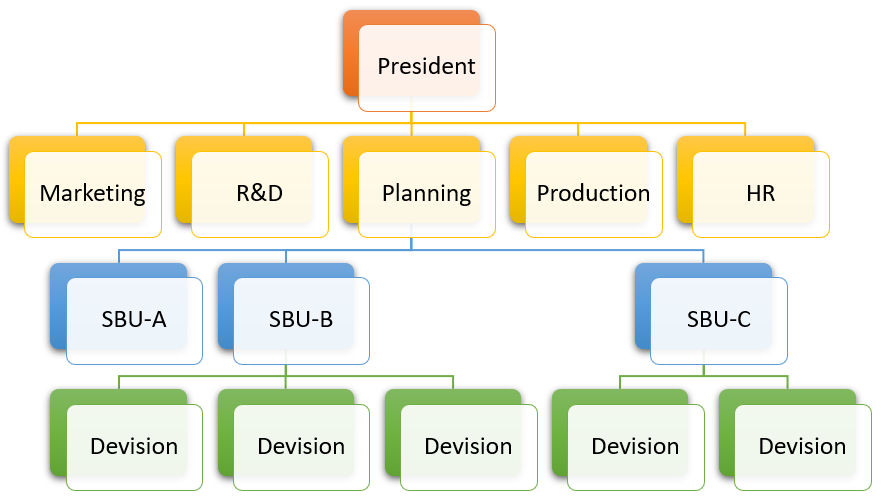In business, a strategic business unit (SBU) is a profit center which focuses on product offering and market segment. SBUs typically have a discrete marketing plan, analysis of competition, and marketing campaign, even though they may be part of a larger business entity.
An SBU may be a business unit within a larger corporation, or it may be a business into itself or a branch. Corporations may be composed of multiple SBUs, each of which is responsible for its own profitability. General Electric is an example of a company with this sort of business organization. SBUs are able to affect most factors which influence their performance. Managed as separate businesses, they are responsible to a parent corporation. General Electric has 49 SBUs.
Companies today often use the word segmentation or division when referring to SBUs or an aggregation of SBUs that share such commonalities.
Strategic Business Unit (SBU) implies an independently managed division of a large company, having its own vision, mission and objectives, whose planning is done separately from other businesses of the company. The vision, mission and objectives of the division are both distinct from the parent enterprise and elemental to the long-term performance of the enterprise.
Simply put, an SBU is a cluster of associated businesses which are responsible for its combined planning treatment, i.e. the company engaged in a diversified range of businesses, categorises its multitude of businesses into a few separate divisions, in a scientific way. The task may include analysis and bifurcation of a variety of businesses.
It can be a business division, a product line of the division or even a specific product/brand, targeting a particular group of customers or a geographical location.
Characteristics of Strategic Business Unit
- Own set of competitors.
- Separate business or a grouping of similar businesses, offering scope for autonomous planning.
- A manager who is accountable for strategic planning, profitability and performance of the division.
A SBU is generally defined by what it has in common, as well as the traditional aspects defined by McKinsey: separate competitors; and a profitability bottom line. Four commonalities include:
- Revenue SBU
- Like Marketing Cost SBU
- Like Operations/HR Profit SBU
- Like sales judged on net sales not gross
Success factors
There are three factors that are generally seen as determining the success of an SBU:
- The degree of autonomy given to each SBU manager.
- The degree to which an SBU shares functional programs and facilities with other sbus.
- The way in which the corporation handles new changes in the market.

The structure of SBU consist of operating units; wherein the units serve as an autonomous business. The top corporate officer assigns the responsibility of the business to the managers, for the regular operations and business unit strategy. So, the corporate officer is accountable for the formulation and implementation of the comprehensive strategy and administers the SBU by way of strategic and financial controls.
In this way, the structure combines related divisions of business into the strategic business unit and the senior executive is empowered for taking decisions for each unit. The senior executive works under the supervision of a chief executive officer.
There are three levels in a strategic business unit, wherein the corporate headquarters remain at the top, SBU’s in the middle and divisions clustered by similarity, within each SBU, remain at the bottom. Hence, the divisions within the SBU are associated with each other, and the SBU groups are independent of each other. From the strategic viewpoint, each SBU is an independent business.
A single strategic business unit is considered as a profit centre and governed by the corporate officers. It stresses over strategic planning instead of operational control so that the separate divisions of the SBU can respond as fast as they can, to the changing business environment.
One thought on “Strategic Business Units (SBU) in Project Management”